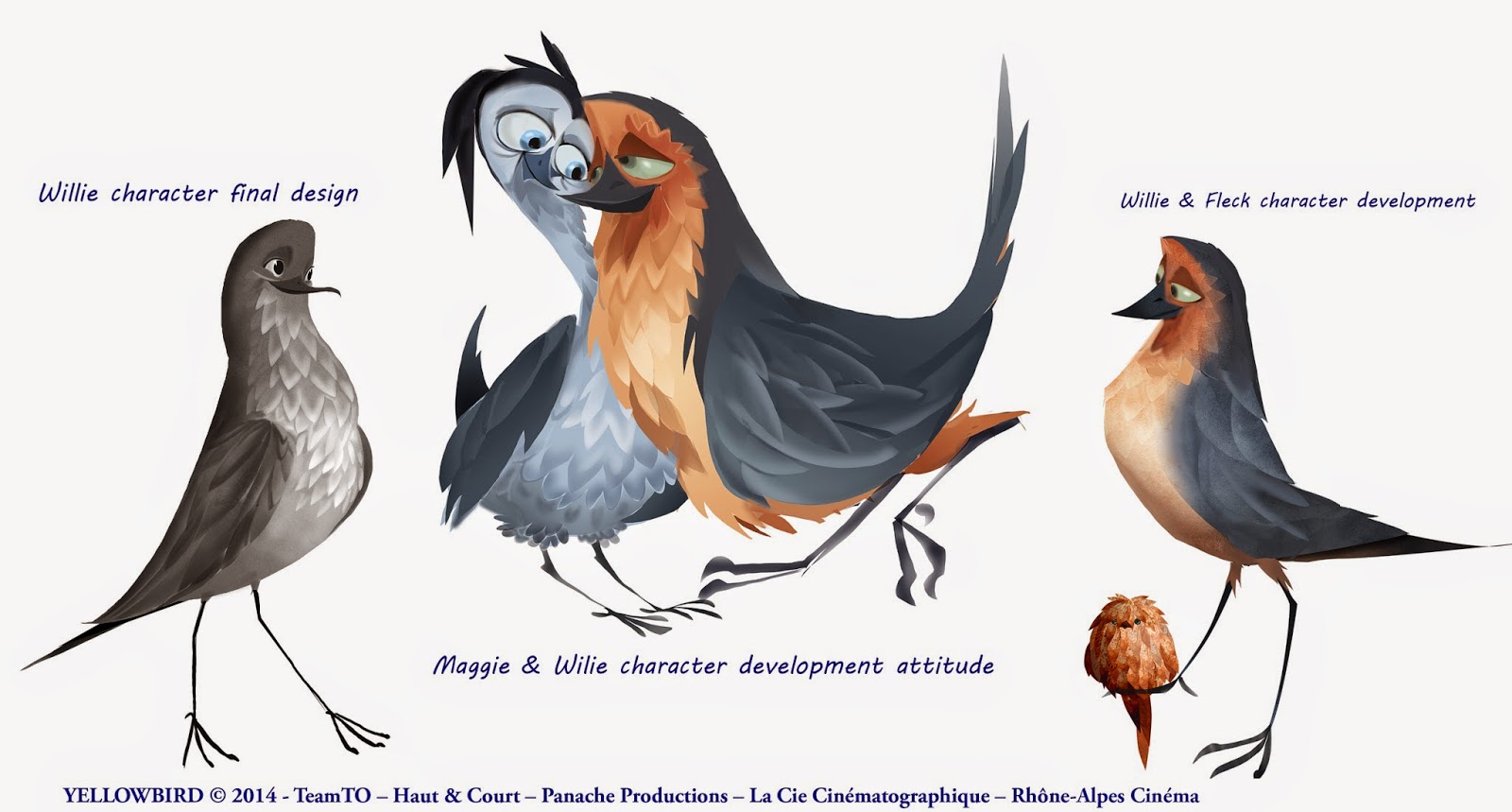On Yellowbird we were quite blessed to have a wonderful cast for such
a small indipendent film.
It was definitely one of those situations where you couldn't quite
believe you were lucky enough to be working with such terrific actors
and how their performance would really help give our characters life.
But I'm jumping the gun here a little as we had to settle on our
designs first and take them to model.
Our design team started by exploring all possible options for
creating the look and give the characters charm and appeal based on
Benjamin's first development artwork.
We had to make sure these characters had appeal yet worked well in
animation, their inner workings as well as the out skin and plumage
being able to retain the 'paper' quality we wanted for our stylized
look.
Capturing the right look for each character goes very deep into the
emotional core of the character itself and of the story; it allows
audiences to connect with them, root for them, or hate them if
they're a villanous individual.
Even before we found our cast we knew we had to pin down our main
characters... And along with assorted secondary and generic ones, we had 13 main characters in our flock to create!
Once we settled on the designs our team of modelers, look development
artists and Character Tds.
Of course before the animator can start using these characters the
models need to be constructed, much in the same way a sculpt is made.
Our
modelers were responsible of building not only our very complex 3D
characters, but also all our sets and props. The paper style look ran
through all departments so as well as adding that look into the
textures of the models once they were finished and coloured, they
added some little creases and folds into the volume of the sets and
props.
Once the modelers had finished each
character, it was given to our charactsr TDs in charge of creating
the articulation rig, a digital skeleton bound to the 3D mesh, to the
sculpt of the character, which allows the animators to manipulate and
move them through its highly complex set of articulations and
controls.
What we wanted to achieve in
Yellowbird was a very realistic natural look, having our characters
behave and move like real birds and not in an anthropomorphic way,
and our team not only built rigs which allowed this but also created
the animation interfaces, establishing muscle, skin, and father
behaviors, which all allow for a broad range of realistic physical
movements but also very cartoony squash and stretch.
It is a cartoon after all and I love
big broad exaggerations and movements, especially in comedy settings,
and anyone watching the film will see the balance between our
realistic bird mannerisms and some very very cartoony animation.
Above and below some of the progression of the character work on Darius, one of our most charismatic characters voiced by the charming, sombre yet fatherly tones of Danny Glover.
We allowed only one exception with
the anthropomorphism in our characters, and that was the Owl in the
hotel tree scene.
Voice by Elliot Gould the owl needed
to use his wings a little more than the others, and it really helped
round the character off. It is one of the funniest scenes in the
movie.
The unsung heroes of any computer animated film are the Technical
Directors and all the tech and soft departments, who's tireless work,
with artists, helps plan and create the best solutions and strategies
for the whole production.
Aside from helping create the tools to build each character, aiding
with the difficult task of making the plumage of each bird move
indipendently if needed, or in unison at the breeze in the air as
they fly, we developed and achieved our own toold to create moving
clouds that retained a stylized look yet moved like real clouds.
All I have to do is make a drawing of what I would like, then
hopefully if it's achievable in the budget, these guys find ways to
make it happen!
In the next post I'll talk specifically about Yellowbird and go over some of his characteristics and the decisions made in finalising his design and model, before heading into the storyboard process.


























































